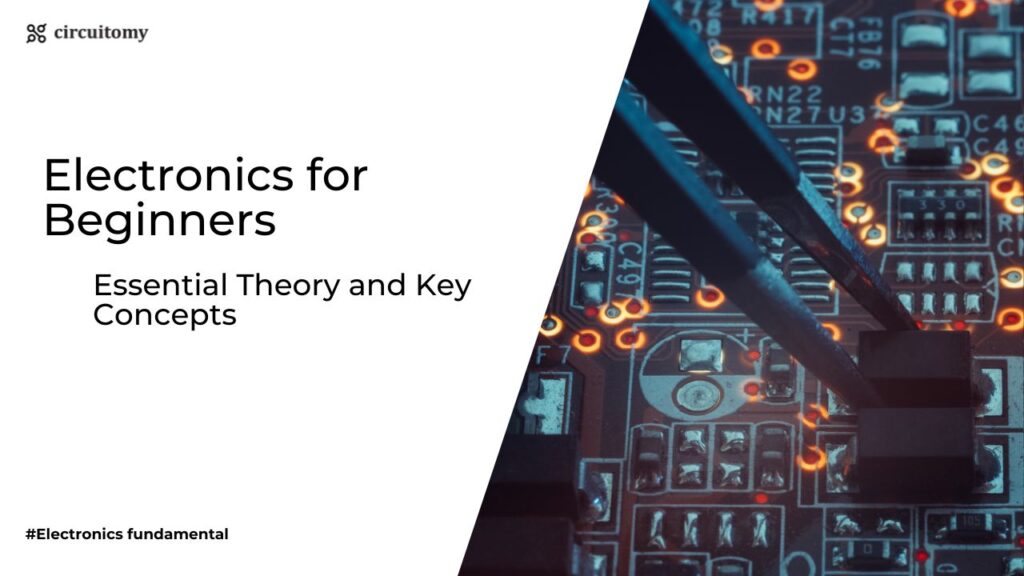Introduction
Hey there! Have you ever wondered how your smartphone, laptop, or even a simple flashlight works? It’s all thanks to electronics—the magic behind the gadgets we use every day.But don’t worry,
you don’t need to be an engineer to understand how it works. In this post, we’ll break down the basics of electronics in a way that’s simple, fun, and easy to follow. Let’s get started
What is Electronics?
At its core, electronics is all about controlling electricity to do useful things. Think of it like this: electricity is the energy, and electronics is the brain that tells that energy where to go and what to do.
Whether it’s lighting up an LED, playing music on your speakers, or sending a text message, electronics make it all possible.
Electron Flow: The Tiny Particles That Make It All Happen
Okay, let’s get a little science for a moment. Electricity is all about the movement of tiny particles called electrons. These little guys are negatively charged, and they love to move around. When they flow through a material (like a wire), we get an electric current.
Electron Flow:
• Electrons are tiny, negatively charged particles.
• In a circuit, electrons move from the negative terminal (where there are too many electrons) to the positive terminal (where there are fewer electrons).
• Think of it like water flowing downhill—electrons “flow” from negative to positive.
Current Flow (Conventional Current):
• This is the opposite of electron flow.
• Scientists originally thought current was caused by positive charges moving, so they defined current as flowing from positive to negative.
• Even though we now know electrons are the ones moving, we still use this “conventional current” direction in circuits because it’s easier to work with.
Materials in Electronics
Materials are classified based on how easily electricity (electrons) can flow through them. There are three main types:
1. Conductors (e.g., Copper, Aluminum)
• What they do: Allow electricity to flow easily.
• Why: They have lots of free electrons that can move around.
• Example: Wires in your phone or laptop are made of conductors because they need to carry electricity.
• Fun Fact: When you plug in a device, electrons flow through the wires to power it.
2. Insulators (e.g., Rubber, Plastic, Glass)
• What they do: Block electricity from flowing.
• Why: Their electrons are tightly bound and can’t move freely.
• Example: The plastic coating on wires is an insulator—it keeps the electricity inside the wire and prevents shocks.
• Fun Fact: Without insulators, touching a wire would be dangerous because electricity would flow into you!
3. Semiconductors (e.g., Silicon, Germanium)
• What they do: Can act like a conductor or an insulator, depending on the situation.
• Why: They have some free electrons, but not as many as conductors.
• How they work:
• When you add energy (like heat or light), electrons can jump and start moving, allowing electricity to flow.
• You can also “dope” semiconductors (add tiny amounts of other materials) to control how well they conduct electricity.
• Example: Semiconductors are used in transistors and computer chips—they’re the reason your phone and computer can do so many things!
• Fun Fact: Semiconductors are the “brains” of modern electronics because they can switch between conducting and insulating.
Why Does This Matter?
• Conductors: Carry electricity where it’s needed (like in wires).
• Insulators: Keep electricity safe and prevent accidents.
• Semiconductors: Make modern electronics possible (like phones, computers, and TVs).
Ohm’s Law is one of the most fundamental principles in electronics and electrical engineering. It defines the relationship between voltage (V), current (I), and resistance (R) in an electrical circuit.
Before diving into Ohm’s Law, you need to understand three fundamental electrical concepts:
1. Current (I)
2. Voltage (V)
3. Resistance (R)
These three are the building blocks of electrical circuits.
1. Current (I)
• Definition: Electric current is the flow of electric charge through a conductor (like a wire).
• Concept: Think of current as the movement of electrons in a circuit. The unit of current is the Ampere (A).
• Formula:
I = Q/t
Where:
I = Current (in Amperes),
Q = Charge (in Coulombs),
t = Time (in seconds).
2. Voltage (V)
• Definition: Voltage, also called electric potential difference, is the force that pushes electric charges through a conductor.
• Concept: Voltage is like the “pressure” that drives current in a circuit. The unit of voltage is the Volt (V).
• Formula:
V= W/Q
Where:
V = Voltage (in Volts),
W = Work done or energy (in Joules),
Q = Charge (in Coulombs).
3. Resistance (R)
• Definition: Resistance is the opposition to the flow of electric current in a conductor.
• Concept: Resistance is like a “barrier” that slows down the flow of electrons. The unit of resistance is the Ohm (Ω).
• Formula:
R = V/I
Where:
R = Resistance (in Ohms),
V = Voltage (in Volts),
I = Current (in Amperes).
Ohm’s Law
Ohm’s Law describes the relationship between current, voltage, and resistance in an electric circuit.
Statement: The current through a conductor between two points is directly proportional to the voltage across the two points and inversely proportional to the resistance between them.
Formula:
V = I x R
Where:
V = Voltage (in Volts),
I = Current (in Amperes),
R = Resistance (in Ohms).
Explanation:
• If the voltage increases, the current increases (assuming resistance stays the same).
• If the resistance increases, the current decreases (assuming voltage stays the same).
